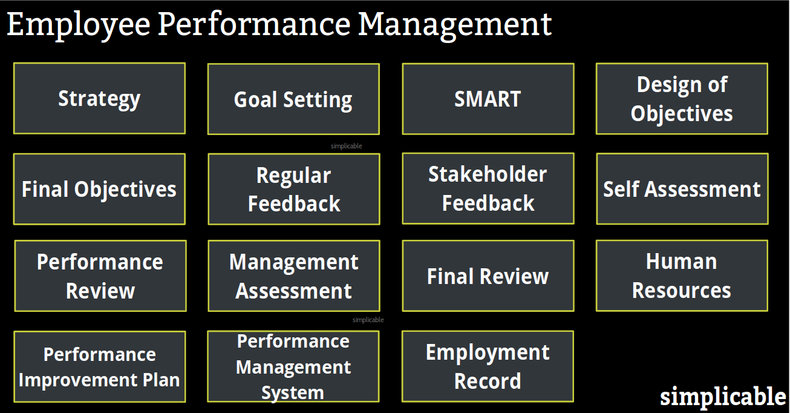

Strategy
An organization issues a set of goals and objectives. This is then translated into goals and objectives for departments and teams.Goal Setting
The objectives of the team are used as a framework for setting employee objectives. Employees contribute to this process by proposing objectives based on their work and career goals.SMART
Objectives are commonly designed to be specific, measurable, achievable, relevant and time-bound. In some cases, a difficulty rating is used to indicate objectives that are achievable versus those that are difficult to achieve.Design of Objectives
Objectives may be designed to be somewhat open-ended. Most organizations experience shifting priorities such that objectives are usually out of date within a month or two. As such, it is in the interests of both management and employees not to make objectives overly specific.Final Objectives
Management and employees sign off on a final set of objectives for a period, usually 6 months. Most organizations consider it important that employees buy-in to their objectives.Regular Feedback
Management provides performance feedback on a regular basis. If the employee is underperforming, they need to know it long before their performance review. Good performance can be communicated informally. Poor performance may require a meeting that is more direct.Stakeholder Feedback
When an employee feels they have done a good job they may ask stakeholders and peers for feedback. An organization may provide an official document template for this purpose. Many organizations will also accept informal documents such as emails.Self Assessment
At the end of the review period, the employee uses their objectives to produce a self-assessment. This includes comments and a numerical score.Performance Review
The employee presents their self-assessment and the manager provides their feedback.Management Assessment
Management produces a final assessment. This document typically includes both the employee self-assessment and the management assessment side by side.Final Review
The employee and manager meet to review and sign off on the final performance review. Generally speaking, both the employee and the manager have no power to reject the other's assessment. However, it is the manager's assessment that counts.Human Resources
The final performance review is submitted to human resources. This feeds into processes such as promotions, rewards, recognition, performance improvement, disciplinary actions and dismissals.Performance Improvement Plan
Generally speaking, human resources is expected to get involved when a performance review has a low score. Most organizations give the employee a chance to improve. A performance improvement plan is developed with the employee to communicate exactly what is expected for the employee to get back on track.Performance Management System
The employee performance management process is often based on a series of documents that outline the process such as a scale for evaluating performance and document templates for each step in the process. In some cases, a performance management system is used that provides a user interface for the entire process and a database that acts as an audit trail.Employment Record
Employee performance reviews are a basic part of an employment record and are retained. Employees are often given a copy for their own records.| Overview: Employee Performance Management | ||
Type | ||
Definition | The process of setting objectives and evaluating performance with employees. | |
Related Concepts | ||

































